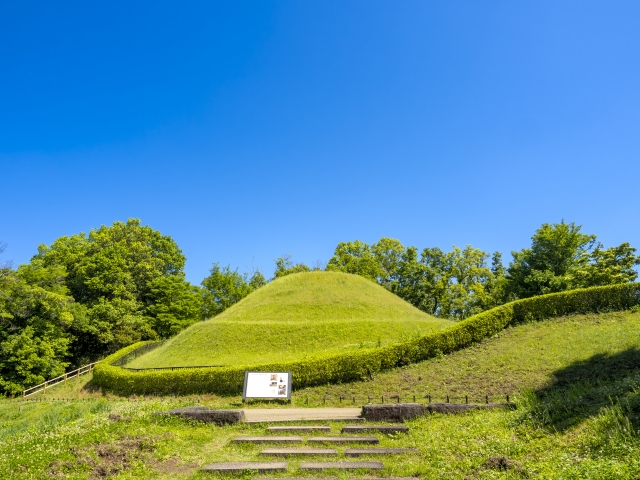Kofun: Exploring Ancient Mysteries of Japan’s History and Culture
Journeying into Ancient Mysteries
Hello everyone. Today, let’s delve into one of Japan’s iconic cultural legacies, the ancient burial mounds known as “kofun.” These massive tombs, constructed as the final resting places for rulers and elite figures of ancient Japan, captivate with their enigmatic presence and rich historical significance. In this article, we’ll introduce several famous kofun and provide information on accessing them from major airports in Japan, along with insights into surrounding attractions.
What are Kofun?
Kofun are ancient burial mounds constructed in Japan during the Kofun period (3rd to 6th centuries AD). Many of these mounds have distinct shapes, such as circular or keyhole-shaped, and offer insights into ancient Japanese society, culture, and burial practices. Excavations of kofun have unearthed elaborate burial chambers and precious artifacts, shedding light on the lives and customs of Japan’s early rulers and nobility.
Famous Kofun
Takamatsuzuka Kofun (Osaka Prefecture)
Takamatsuzuka Kofun, located in Sakai City, Osaka Prefecture, is renowned as the largest keyhole-shaped tomb in Japan. The tomb is adorned with intricate clay figurines and numerous burial artifacts, providing glimpses into the lavish burial customs of ancient nobility.
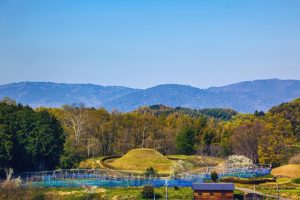
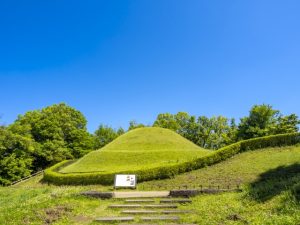
Daisen Kofun (Nara Prefecture)
Daisen Kofun, situated in Kashihara City, Nara Prefecture, is a keyhole-shaped tomb believed to be the burial site of Emperor Tenmu’s father, Prince Yamashiro. The grand scale and design of the mound reflect the power and prestige of Japan’s ancient imperial lineage.
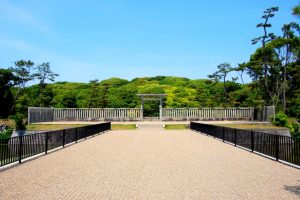
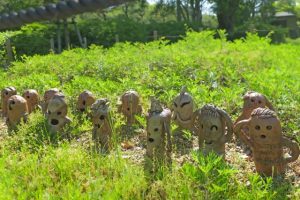
The Saitama Kofun Group (Saitama Prefecture)
The Sakitama Kofun Group is a collection of ancient burial mounds located in Saitama City, Saitama Prefecture. This kofun group is known as one of the representative archaeological sites in Saitama Prefecture, where numerous keyhole-shaped burial mounds from the Kofun period are concentrated. The Sakitama Kofun Group comprises a variety of burial mounds in different shapes and sizes, providing valuable insights into the society and culture of ancient Saitama. Among them, the Maruyama Kofun is particularly famous within the Sakitama Kofun Group. With its large horizontal stone chamber and rich collection of burial goods, it offers significant archaeological evidence regarding the social status and lifestyle of ancient elites. Recognized for its abundant archaeological remains and historical significance, the Sakitama Kofun Group is designated as an important cultural asset of the region, safeguarded for future generations.
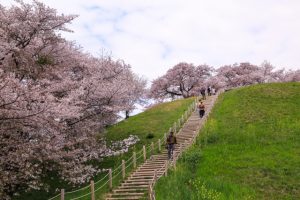
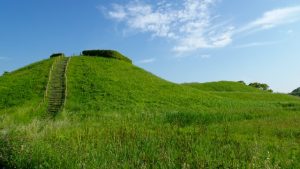
Access Information
From Narita Airport
From Narita Airport, travelers can reach kofun sites by taking the Narita Express to Tokyo Station and transferring to various JR lines or private railways. From nearby train stations, buses or taxis provide access to the kofun sites.
From Haneda Airport
Similarly, from Haneda Airport, travelers can reach kofun sites by traveling to Tokyo Station and connecting to JR lines or private railways. Direct flights from Haneda Airport to Kansai International Airport or Chubu Centrair International Airport also provide convenient access to kofun sites in western Japan.
From Kansai International Airport
From Kansai International Airport, visitors can easily access kofun sites in Kyoto, Nara, and Osaka prefectures via JR lines or private railways. From these regions, buses or taxis can be used to reach specific kofun sites.
Surrounding Information
The areas surrounding kofun sites are often rich in historical and cultural attractions. Visitors can explore nearby historical monuments, museums, and art galleries to further immerse themselves in Japan’s ancient heritage. Additionally, sampling local cuisine and specialties is highly recommended to complete the cultural experience.
Conclusion
Kofun represent invaluable cultural heritage sites that offer a window into Japan’s ancient past. Their enigmatic presence and historical significance continue to intrigue and inspire visitors from around the world. We invite you to embark on a journey of discovery through Japan’s ancient history and culture by exploring these fascinating kofun sites.
We wish you an unforgettable journey. Until next time!

